The ZTE Axon 30 Ultra Review - Something Surprisingly Different
by Andrei Frumusanu on July 30, 2021 8:00 AM EST- Posted in
- Mobile
- Smartphones
- ZTE
- Axon 30 Ultra
System Performance - Extremely Snappy
Featuring a Snapdragon 888 as well as a 144Hz screen extremely fast touch response, we expect the Axon 30 Ultra to perform admirably, and that’s generally indeed what you should see on the phone.
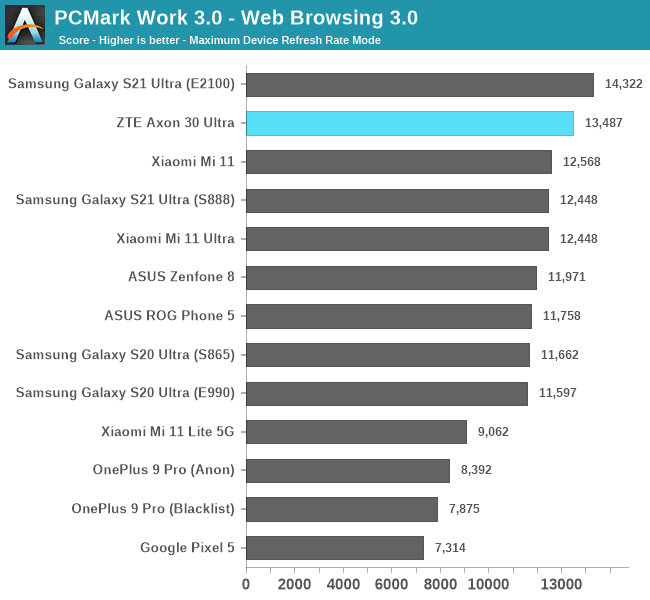
In the PCMark Web browsing test, the Axon 30 Ultra is actually amongst the most aggressive devices on the market right now, certainly amongst S888 phones.
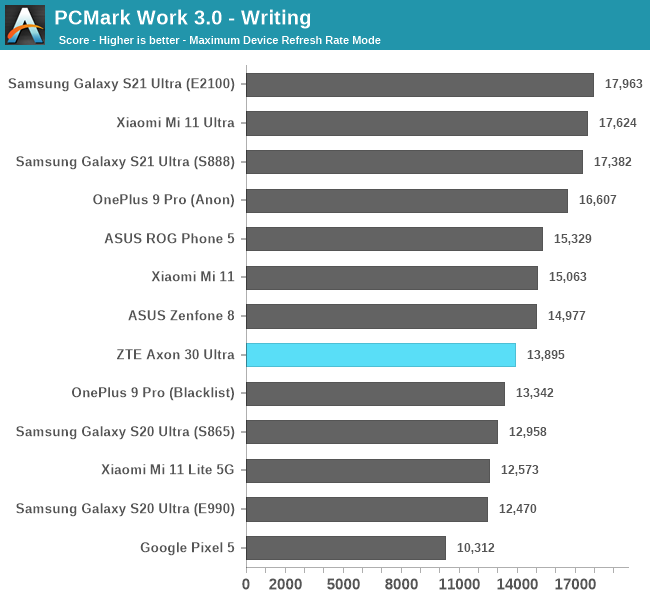
The writing sub-test which is most representative of general UI responsiveness, we see the Axon 30 Ultra fare well in the charts although it’s not the most aggressive.
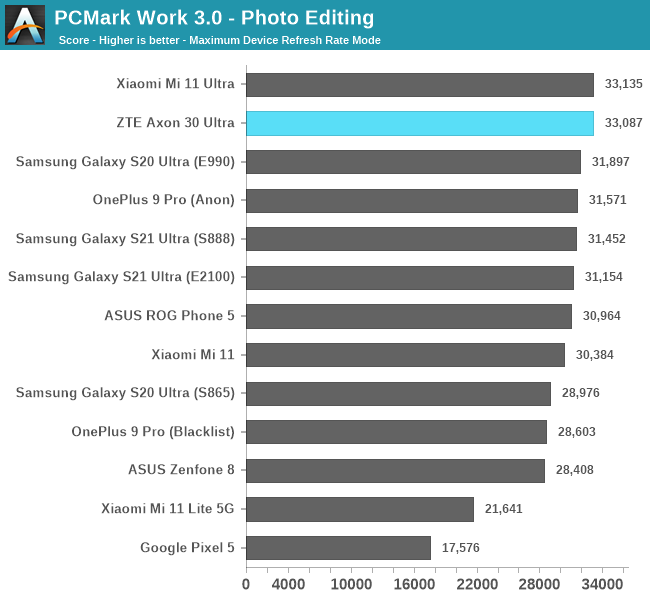
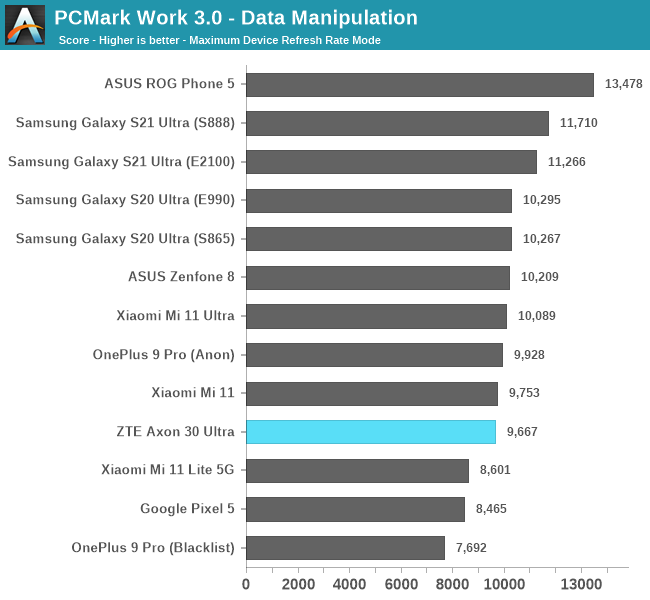
In the photo editing and data manipulation tests it’s also quite middle of the line, but still featuring great performance.
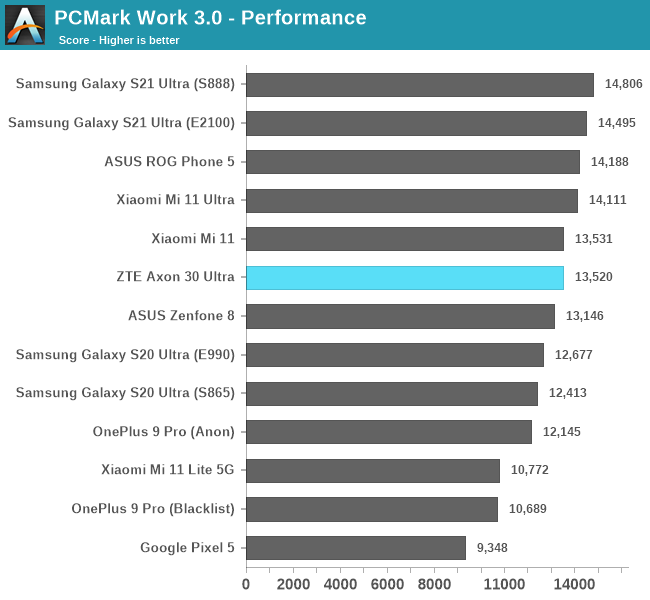
The end score lands the phone in the middle of the pack amongst other Snapdragon 888 phones which is still great.
Also, I’d like to mention that while testing the phone I unfortunately discovered that ZTE is cheating in PCMark; the OS detects the application and pegs the CPU frequencies to maximum, which naturally in results in absurdly high scores that are unrealistic. This is more of a classic case of a more blatant benchmark cheating which tends to be common with the more misguided vendors. The scores publish here bypass the detection and are representative of general application performance.
Web Browser Performance
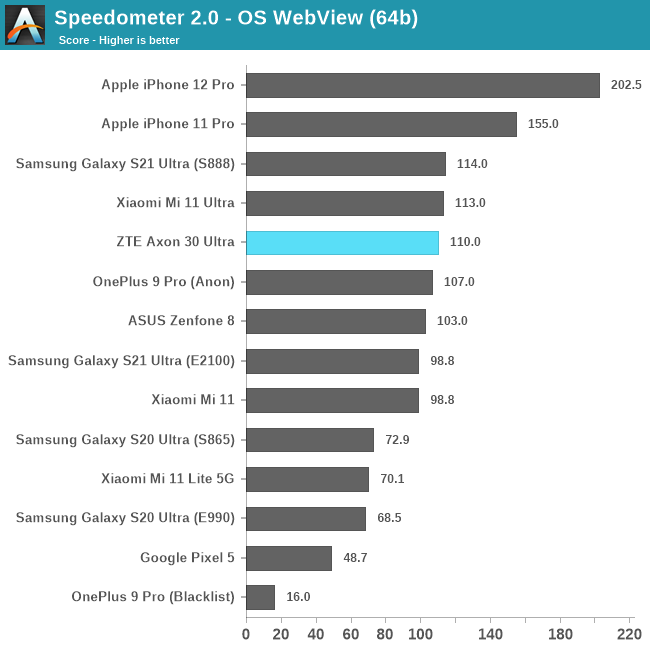
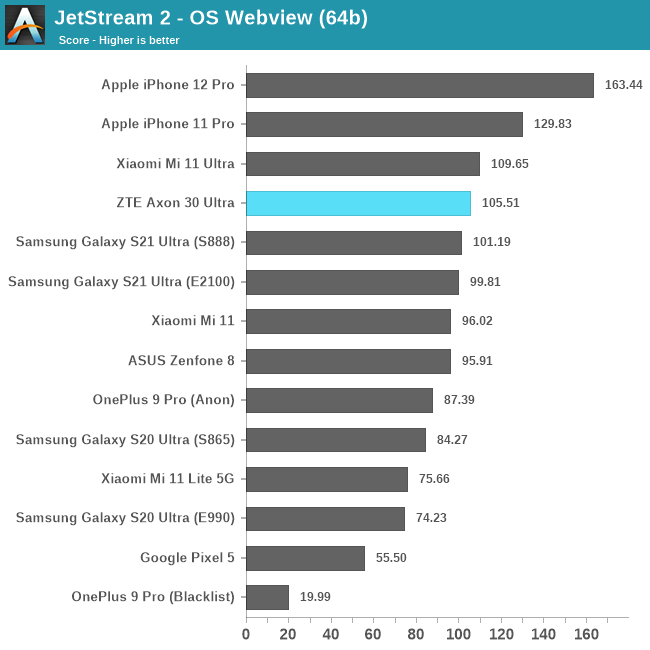
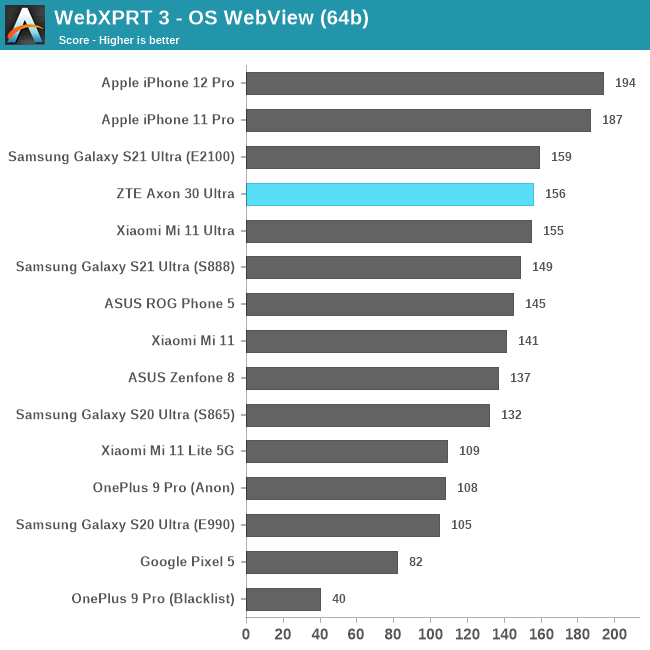
In the web browser performance tests, the Axon 30 Ultra performs excellently and is amongst the fastest Snapdragon 888 devices out there.
Overall, the performance of the Axon 30 Ultra is excellent and is amongst one of the best in the current market. The software stack seems to work as well as any other good implementation, and the phone’s hardware in terms of a high refresh rate screen and low input touch response result in very fluid and responsive experiences.
I’d like to note here that in regards to the phone 144Hz refresh rate mode isn’t exactly much of an advantage over the 120Hz mode, beyond the increased power consumption, it’s actually quite hard to tell the difference to 120Hz so I can’t claim that it’s of any practical advantage to the phone beyond going that extra inch in terms of marketing features.










25 Comments
View All Comments
warisz00r - Friday, July 30, 2021 - link
"somewhat particular device"coburn_c - Saturday, July 31, 2021 - link
From across the specific ocean.dotjaz - Friday, July 30, 2021 - link
"Surprisingly Different"And unsurprisingly lacking on software support.
Seriously, it probably cost an extra $100000 to offer one more update and one extra year of security. That's maybe $1 per phone. Just charge the extra dollar or five.
sabot00 - Friday, July 30, 2021 - link
No way. An extra year of support is easily 5-10 million USD. Even if dev work was free, the cost of carrier certification is huge.linuxgeex - Friday, July 30, 2021 - link
Except that with project treble all the components which are involved in carrier certification do not change with security updates. Carrier re-certification revolves around the baseband, which rarely changed even before project treble.jvl - Saturday, July 31, 2021 - link
So charge 5 USD more. Or 10 USD more. Which is exactly what OP proposed.. (Nonwithstanding below's comment)Samus - Sunday, August 1, 2021 - link
Agreed. If PR honestly pitched these things with guaranteed software support for 3-4 years I don't think an extra $5-$10 would phase anybody, especially since nobody (other than Apple I suppose) does that.Silver5urfer - Friday, July 30, 2021 - link
Why should anyone buy this device which has literally same lack of feature set from HW perspective = no 3.5mm jack, no SD card slot, questionable servicing support and OS support. For that cash I'd get a Sony Xperia 5 Mark III. Which has everything this phone lacks and even better Front display due to no hole or such.neothe0ne - Friday, July 30, 2021 - link
Agreed. Xperia 5 III is also likely to end up being supported on AT&T's network from February 2022 onward. I don't see any ZTE Axon on the list so far.https://www.att.com/idpassets/images/support/wirel...
drajitshnew - Friday, July 30, 2021 - link
@silversurfer I absolutely agree about microSD cards and 3.5mm Jack. I bought my currently phone because it had a flagship-eque chipset and 3.5mm Jack support.I thought that 256GB flash would alleviate the need for micro SD. As I described above though it required a factor reset and 2 (two) complete re-imaging. And I think it be would have been a LOT less painful if it had a microSD. At the same time I guess we as consumers have to accept